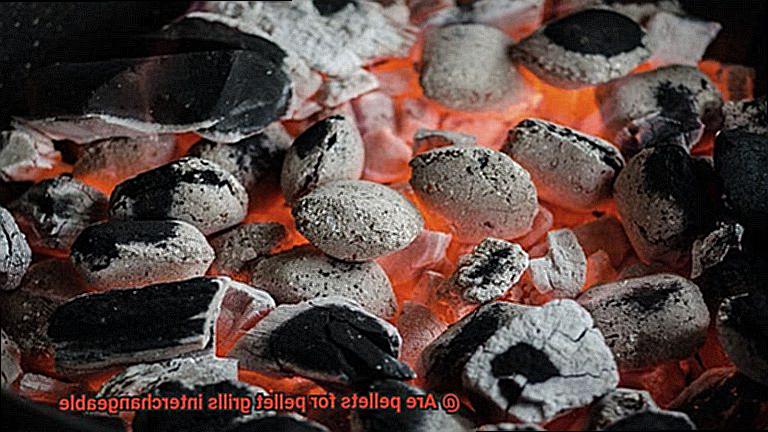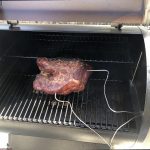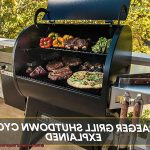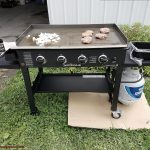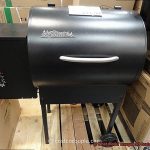Pellet grills have taken the outdoor cooking world by storm. They’re the perfect combination of convenience, efficiency, and versatility that makes them a favorite among grilling enthusiasts. But when it comes to using these grills, one question often pops up: can you use any pellets for pellet grills?
If you’re new to pellet grilling, choosing the right pellets might seem daunting. With so many different types of wood used to make pellets, it’s easy to get confused about whether different pellets can be mixed and matched. But here’s the thing – using the right pellets is crucial for achieving that perfect flavor and aroma in your food.
So, are pellets for pellet grills interchangeable? The answer is no. The type of wood used to make your pellets affects the taste and aroma of your food. Mixing different types of wood pellets can result in a flavor that may not be appealing to your taste buds.
In this blog post, we’ll delve into why it’s important to use the right pellets for your pellet grill, explore the various types of pellets available in the market, and explain why mixing them could ruin your cooking experience altogether. Whether you’re a newbie or an experienced pro at pellet grilling, this article will help you make an informed decision next time you’re buying pellets for your grill.
Contents
What are Pellet Grills?
Pellet grills, also known as wood pellet grills, are the latest and greatest addition to outdoor cooking appliances. They use compressed sawdust pellets as fuel to cook food, and they do so in a unique and flavorful way. In this article, we’ll explore what makes pellet grills so special and why they’ve become the go-to choice for outdoor cooking enthusiasts.
How Do Pellet Grills Work?
Pellet grills use an auger to feed compressed sawdust pellets from a hopper to a firepot or burn cup. The pellets are then ignited, creating heat and smoke that cook the food. The real magic of pellet grills is their ability to maintain a consistent temperature for hours on end, thanks to their electronic control board. This means you can set it and forget it, without needing to constantly monitor or adjust the temperature manually.
What Makes Pellet Grills Special?
One of the most distinct advantages of pellet grills is their use of natural wood pellets as fuel. This gives food cooked on pellet grills a unique smoky flavor that is hard to replicate with other types of grills. There are many different types of wood pellets available, each with its own distinct flavor profile, allowing you to experiment with new flavors and find your favorite.
Pellet grills are also incredibly versatile. They can be used for grilling, smoking, roasting, baking, and even braising food. This makes them perfect for slow-cooking meats like brisket, ribs, and pork shoulder.
Lastly, pellet grills offer precision temperature control that is unparalleled in other types of outdoor cooking appliances. With the ability to maintain a consistent temperature for hours on end and adjust the temperature remotely with Wi-Fi-enabled models, you have complete control over your cooking experience.
What are Pellets?
Pellets are the secret ingredient that makes pellet grills so unique and exceptional. These small, cylindrical pieces of compressed sawdust or wood shavings are specially designed to be used as fuel in pellet grills. Their ability to add flavor and convenience to your cooking experience is why they have become the go-to fuel for many grill enthusiasts.
Pellets are made from a variety of hardwoods such as hickory, mesquite, oak, cherry, apple, and maple. Each wood offers its distinct flavor profile and burn characteristics. The wood is ground into sawdust or shavings and then compressed into small pellets. These pellets are fed into the grill’s hopper and transported to the fire pot by an auger system.
The advantages of using pellets in a pellet grill are numerous. Firstly, they burn cleanly and produce very little ash. This means that cleaning up after a cookout is much easier than with traditional charcoal or gas grills. Secondly, because pellets are made from hardwoods, they give food a distinct smoky flavor that cannot be replicated with other types of fuel. With pellets, you can infuse your food with flavors such as hickory, apple, or mesquite.
However, it’s important to note that not all pellets are created equal. Some manufacturers may use lower quality wood or additives in their pellets that can affect their performance and taste. That’s why it’s essential to purchase high-quality pellets from reputable brands to ensure optimal results.
Can Pellets be Interchanged?
Pellets are a popular choice for grill masters looking for convenience and ease of use. But can pellets be interchanged between different brands and types of pellet grills? The answer to this question is both yes and no, and we’re here to give you the details.
First off, it’s essential to check your specific grill’s manufacturer recommendations before attempting to use different types of pellets. Some pellet grills are designed to work best with specific types of pellets, while others are more versatile and can handle a wider range of pellets.
When considering whether pellets can be interchanged, the composition of the pellets is a significant factor. Pellets can be made from various materials such as hardwoods, fruitwoods, and even corn or other grains. Each type of pellet produces a distinct flavor profile when used for cooking. It’s best to stick with recommended pellets if you’re looking for a particular taste for your food.
The size and shape of the pellets also play a crucial role in their performance in different grills. Some grills work best with smaller or larger pellets, while others may require a specific shape or density of pellet. It’s important to follow manufacturer recommendations and experiment with different pellets to determine what works best for your grill.
Temperature range is another consideration when using different types of pellets. Some pellets burn hotter than others, which can impact cooking times and overall results. Experimentation is key to finding the ideal pellet for your grill and cooking needs.
In summary, while some pellets may be interchangeable between different types of pellet grills, it’s crucial to do your research and follow manufacturer recommendations for optimal results. Experimentation and personal preference also play a role in determining which pellets work best for your outdoor cooking needs.
Considerations for Choosing Pellets
Choosing the right pellets is a crucial step towards that goal. However, with so many options out there, it can be overwhelming to know where to start. As an expert in the field, let me guide you through the considerations for choosing pellets.
First and foremost, it’s essential to choose pellets that are specifically designed for use in pellet grills. These pellets are made from compressed sawdust and do not contain any additives or fillers that could negatively impact the taste of your food. Avoid using any old wood pellets you might have lying around in your garage.
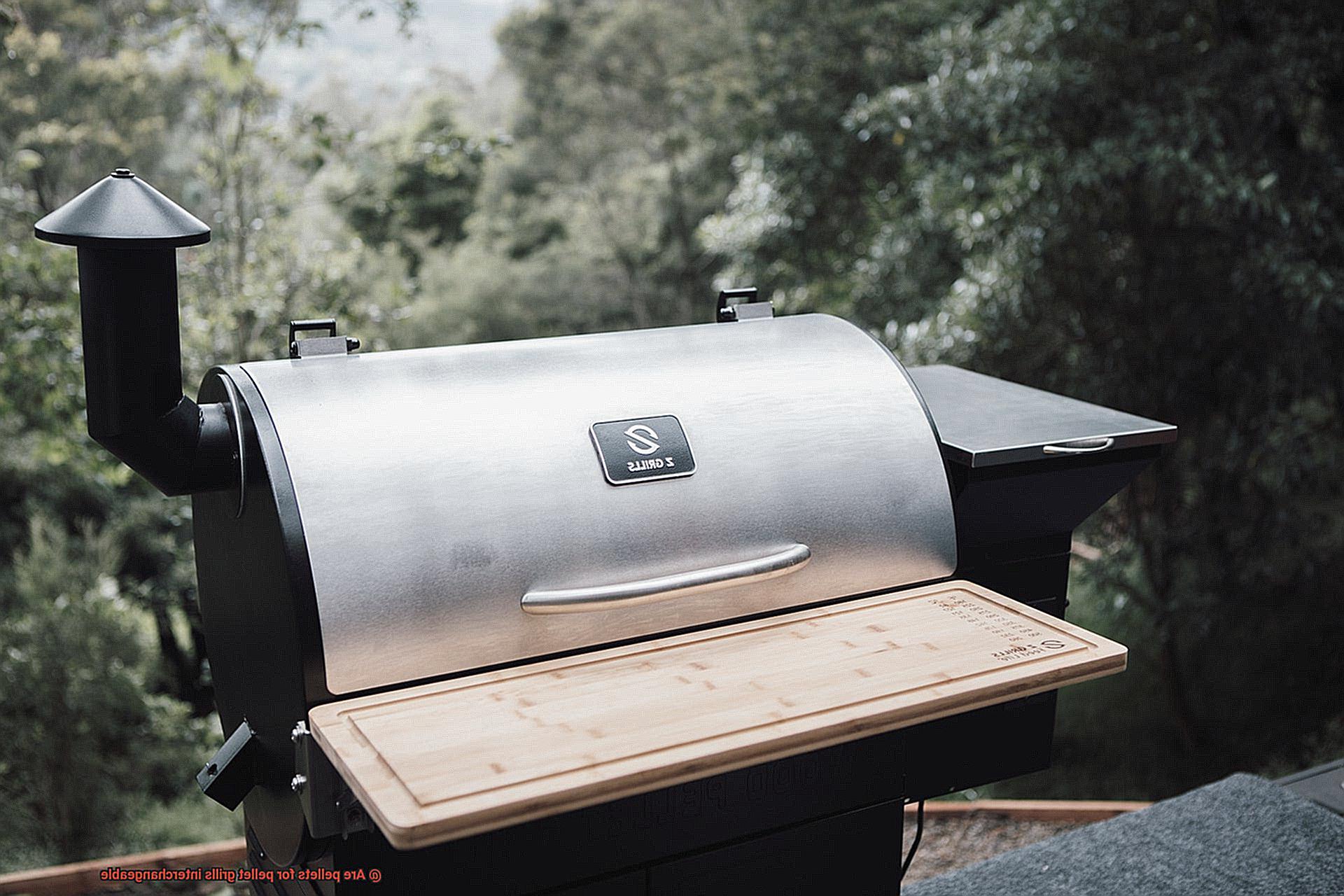
The type of wood used in the pellets is also an important consideration. Different types of wood will impart different flavors to your food, so it’s vital to choose wisely. For example, hickory pellets are perfect for smoking pork and beef, while applewood pellets are ideal for smoking poultry and fish. You can experiment with different types of wood to discover new and exciting flavor combinations.
Quality is another key factor when it comes to choosing pellets. Low-quality pellets can contain impurities or inconsistencies that can affect the temperature and smoke output of your grill, leading to uneven cooking and off-flavors in your food. To ensure the best results, look for high-quality pellets made from 100% hardwood with no fillers or additives.
Finally, make sure you choose pellets that are appropriate for the temperature range of your grill. Using the wrong type of pellet can result in poor performance and inconsistent results. Check the recommended temperature range for your grill and select pellets that are specifically designed to perform well within that range.
To summarize, here are the four key considerations for choosing pellets: select pellets designed for pellet grills, choose the right type of wood, pick high-quality pellets with no additives or fillers, and ensure they’re appropriate for the temperature range of your grill.
Quality of the Pellets
If you want to achieve optimal performance and incredible flavor from your grill, there are a few critical factors to consider when choosing your pellets.
First and foremost, don’t make the rookie mistake of using any old pellet. It’s essential to choose pellets that are specifically designed for pellet grills. Using pellets made for other types of grills or stoves can result in poor performance and even damage to your grill.
When it comes to the quality of the pellets themselves, there are a few key considerations. The type of wood used is critical because different woods impart different flavors and burn characteristics. Whether you prefer the bold smokiness of hickory, the sweet fruitiness of apple, or something else entirely, select a wood that suits your taste and cooking style.
Another factor to consider is moisture content. Pellets with too much moisture can wreak havoc on your grill, causing uneven burning and difficulty maintaining temperature. Look for pellets with a moisture content between 6-8% for optimal performance.
Additionally, avoid pellets with additives and fillers whenever possible. Cheaper pellets may contain fillers like oak or alder that can negatively impact the flavor of your food. Some pellets may also contain binding agents or other additives that could be harmful if ingested.
Finally, make sure to select a reputable brand of pellets with a track record of quality and great reviews. While cheaper options may seem like an attractive bargain, they often come with lower quality and potential issues that can impact your grilling experience.
Size and Shape of the Pellets
Today we’re delving into a crucial aspect of pellet grilling: the size and shape of pellets. Contrary to popular belief, not all pellets are created equal. In fact, the size and shape of pellets can significantly impact your grilling experience.
Let’s start with the basics. While the standard size for pellets is ¼ inch in diameter and 1 inch in length, some brands may deviate slightly. It’s important to note that these variations can affect how pellets burn and perform in your grill, ultimately impacting the flavor and smoke output of your food.
Sub-Topic 1: Pellet Grill Requirements
Firstly, it’s essential to check if your pellet grill has specific requirements for pellet size and shape. Some grills may require a particular size or shape of pellets to fit properly in their hopper or auger system. By referring to your grill’s user manual or manufacturer’s website, you can ensure that you’re using the appropriate pellets for optimal performance.
Sub-Topic 2: Flavor and Smoke
Now, let’s talk about how pellet size and shape impact flavor and smoke output. The size and shape of pellets can influence the amount and strength of smoke produced, which ultimately affects the taste of your food. Some brands may produce more smoke or a stronger flavor depending on their size and shape. Therefore, it’s crucial to experiment with different brands and types of pellets to discover which ones work best for your taste preferences.
Sub-Topic 3: Experimentation
Don’t be afraid to mix it up and try something new. Experimentation is key when it comes to finding the perfect combination of pellets for deliciously grilled food every time. By testing out various brands and types of pellets, you’ll be able to determine which ones produce the best results for your grilling needs.
Tips for Interchanging Pellets
Pellet grills have taken outdoor cooking to a whole new level, and for good reason. They produce some of the most delicious and smoky flavors in your meats. However, with so many different types and brands of pellets available, it can be challenging to know which ones to choose. In this blog post, we’ll share some useful tips and considerations for interchanging pellets in your pellet grill to help you achieve the best results possible.
Stick with Reputable Brands
One crucial tip when interchanging pellets is to stick with reputable brands that specialize in making pellets for grilling. These brands often have consistent quality and make pellets specifically designed for use with pellet grills. It’s also a good idea to check the label or website of the pellet brand to ensure that they are compatible with your specific grill model. This will save you from wasting time, money, and effort on pellets that don’t fit your grill or give off the desired flavor.
Avoid Non-Grilling Pellets
Another tip is to avoid using pellets made for heating stoves or other non-grilling purposes. These pellets may contain additives or chemicals that can be harmful to ingest through food. Stick with pellets made specifically for grilling and smoking meats. This way, you can ensure that you’re using safe and high-quality pellets that will give off the right aroma and flavor.
Consider the Wood Type
Choosing the right wood type is critical when interchanging pellets for your pellet grill because different woods can impart various flavors and aromas to your food. For example, hickory and mesquite are popular choices for smoking beef, while fruitwoods like apple or cherry are great for smoking poultry or fish. Understanding which wood type complements your meat can help you achieve the desired taste in your food.
Clean Out Your Hopper
When interchanging pellets, it’s important to clean out any remaining pellets from your hopper before adding new ones. This ensures that the new pellets do not mix with the old ones, which can affect the overall flavor and burn time of the grill. Cleaning the hopper will keep your grill functioning at its best and ensure consistent results every time.
Store Your Pellets Properly
Lastly, it’s important to store your pellets correctly to maintain their quality. Keep them in a cool, dry place away from moisture and direct sunlight. This will help prevent mold growth and ensure that the pellets remain dry and easy to use. Proper storage can also extend the shelf life of your pellets, giving you more time to experiment with different flavors.
utXaFNYj9uE” >
Conclusion
To sum up, the answer to whether pellets for pellet grills are interchangeable is not a straightforward one. While some pellets can be swapped between different types of pellet grills, it’s crucial to conduct research and adhere to manufacturer guidelines for optimal outcomes. Mixing various wood pellets may result in a flavor that doesn’t appeal to your taste buds. Therefore, it’s vital to choose pellets specifically designed for use in pellet grills, made entirely from hardwood with no fillers or additives, and appropriate for your grill’s temperature range.
Pellet grills offer precise temperature control, versatility, convenience, and unique smoky flavors that can’t be replicated with other types of grills. Pellets are made from various hardwoods like hickory, mesquite, oak, cherry, apple, and maple. The wood type used in the pellets affects the food’s taste and aroma.
When interchanging pellets in your pellet grill, opt for reputable brands that specialize in making pellets for grilling while avoiding non-grilling pellets. Consider the wood type that complements your meat and clean out your hopper before adding new ones. Proper storage can also extend the shelf life of your pellets.
By adhering to these tips and considerations when selecting and interchanging pellets for your pellet grill, you can achieve optimal performance and incredible flavor every time you cook.

